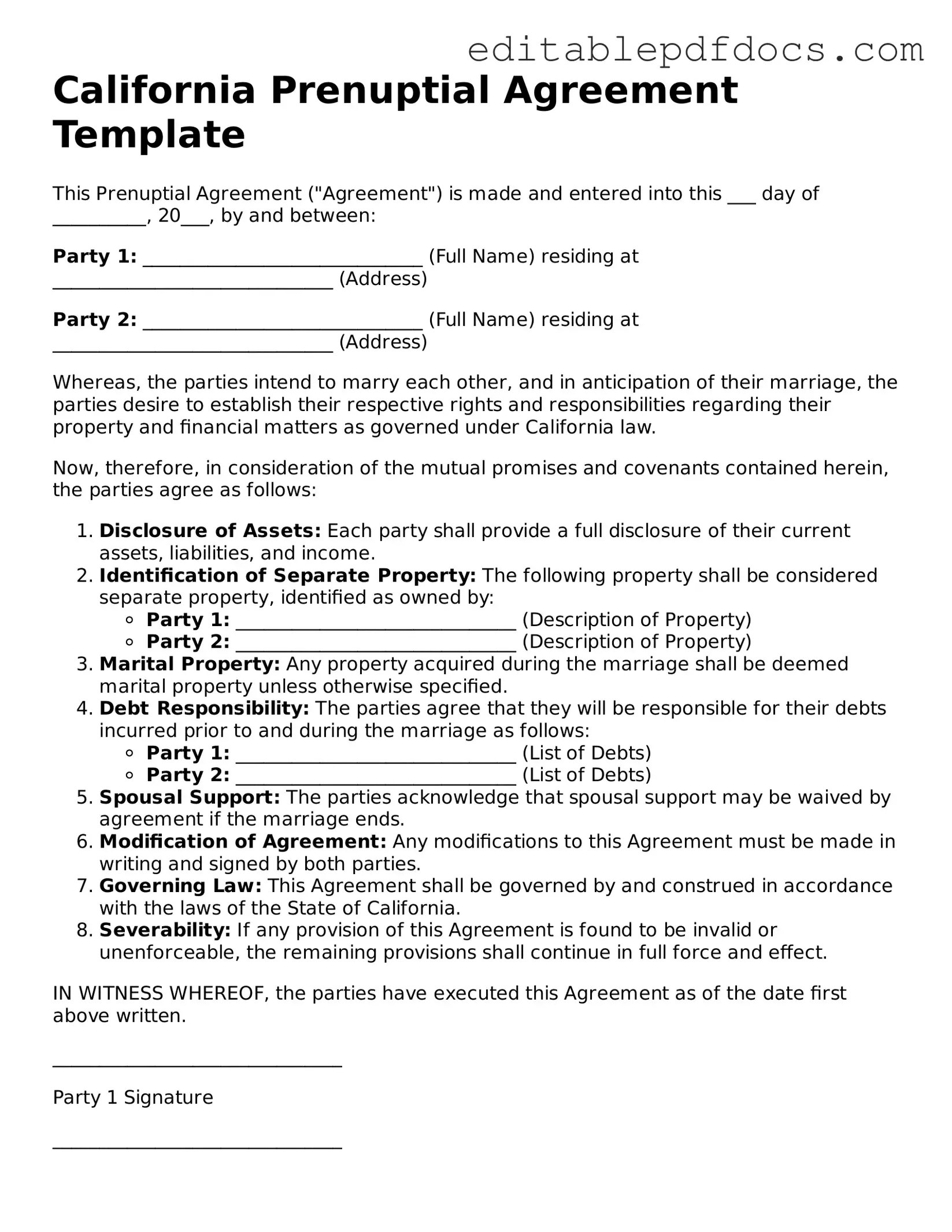Filling out a California Prenuptial Agreement can be a straightforward process, but many people make common mistakes that can lead to complications down the road. One frequent error is not fully understanding the purpose of the agreement. A prenuptial agreement is designed to clarify financial rights and responsibilities, but some individuals treat it as a mere formality, overlooking its importance.
Another mistake is failing to disclose all assets and debts. Transparency is crucial in a prenuptial agreement. If one party hides significant assets or liabilities, it can render the agreement invalid. Both parties should provide a complete and honest account of their financial situations to avoid future disputes.
Some couples rush through the process without proper legal advice. While it might seem tempting to save money by filling out the form themselves, consulting with a lawyer can help ensure that the agreement complies with California law and adequately protects both parties. A legal expert can also help clarify any confusing terms.
Moreover, individuals often neglect to update their prenuptial agreements after major life changes. Events like the birth of a child, significant changes in income, or the acquisition of new assets should prompt a review of the agreement. Keeping the document current is essential for it to remain relevant and effective.
Another common oversight is using vague language. Clear and specific terms are vital in a prenuptial agreement. Ambiguities can lead to differing interpretations, which can cause conflicts later on. It’s important to define all terms clearly to ensure both parties have the same understanding.
Additionally, many people fail to consider the emotional aspects of a prenuptial agreement. Discussing finances can be sensitive, and approaching the topic without care can lead to misunderstandings or hurt feelings. Open and honest communication is key to addressing concerns and ensuring both parties feel comfortable.
Some couples also forget to include provisions for spousal support. While many assume this will be addressed later, it’s wise to outline expectations regarding spousal support in the prenuptial agreement. This can prevent disputes and provide clarity should the relationship end.
Another mistake is not having the agreement signed and notarized properly. In California, for a prenuptial agreement to be enforceable, it must be in writing and signed by both parties. Notarization can add an extra layer of authenticity, which can be beneficial if the agreement is ever contested.
Lastly, individuals sometimes overlook the importance of timing. It’s best to complete a prenuptial agreement well before the wedding date. Rushing through the process at the last minute can lead to mistakes and may even raise questions about coercion. Allowing ample time for discussion and revision can lead to a more thoughtful and effective agreement.
